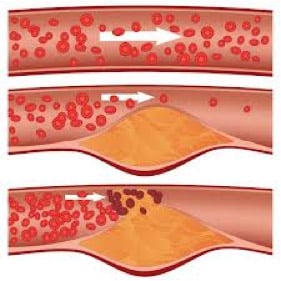Do you get fatigue, aching, cramping or pain in one or both of your feet, calves, thighs or buttocks when you are walking, which goes away when you stop walking? Does it come on more rapidly when you are walking uphill or become aggravated elevating your legs? Or is the pain constant? Then you could have Peripheral Arterial Disease (PAD)*.
PAD is a real problem that mainly affects people over 50, although it can affect younger people. In its early stages or for those that lead a sedentary lifestyle it may be symptomless. It is a disease that is often overlooked.
The main cause of PAD is atherosclerosis, which is where arteries become narrowed by fatty deposits. If a person has PAD, it often goes hand-in-hand with narrowing of the arteries that lead to the heart and brain, which can cause angina, heart attacks, TIA’s and strokes. It can also cause kidney disease and loss of vision.
Pain occurs when moving because the muscles demand more oxygen but the blood supply is limited because of narrowed arteries; the pain eases when a person rests (intermittent claudication). As the disease worsens pain is felt constantly (rest pain). At night, pain may be partially relieved by hanging the leg out of bed.
PAD may be symptomless, but some symptoms a person may have are:
- Pain
- Cold feet
- Affected leg may be pale or bluish
- Discolouration of toes
- Total or partial loss of hair on legs or feet
- Skin changes such as dry, shiny skin on the legs and feet
- The affected leg may sweat excessively
- Pulses in the leg may be weak or absent
- Leg muscles may shrink
- Leg may be dusky red
- There may be numbness or weakness in the affected leg
- Nails may be slow growing, brittle and prone to fungal infection or pitting
- There may be ulcers or sores that won’t heal
- Male impotence (aortoiliac obstruction)
Risk factors include smoking, over-drinking and obesity. PAD causes ulcers and gangrene, leading to possible loss of limb and ultimately can lead to death.
If you do experience recurring episodes of leg pain, make an appointment with your GP, especially if you are a smoker or you have a confirmed diagnosis of diabetes, high blood pressure and/or high cholesterol.
*Some other reasons for pain in the lower limb when walking includes sciatica and spinal stenosis, deep vein thrombosis, entrapment syndromes and muscle/tendon injury







